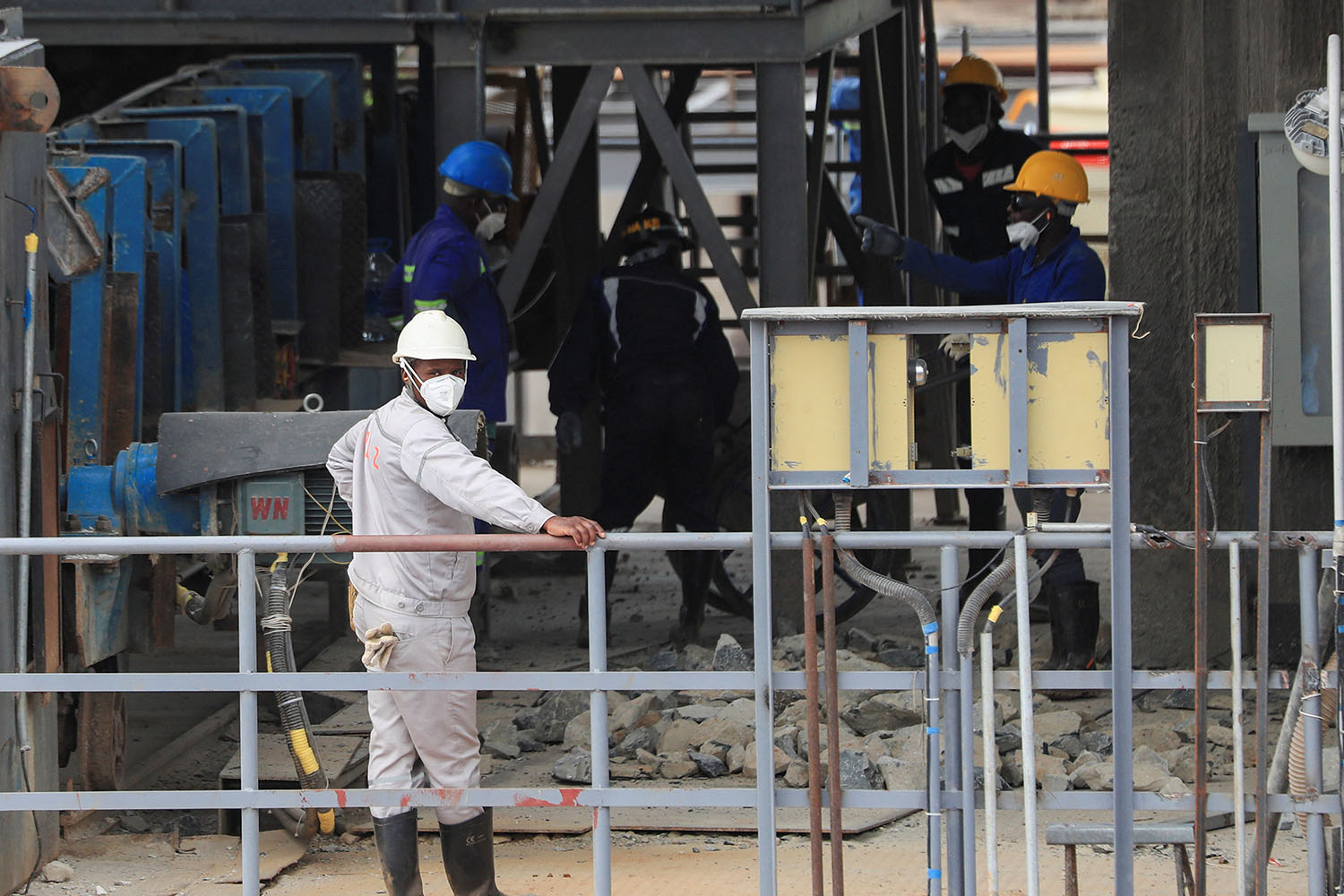The competition for Africa’s critical minerals is intensifying. If the United States wants to differentiate itself from competitors—notably, China—it will need to lead with its values and form partnerships with African countries that are economically feasible, environmentally sustainable, and ethical (the values central to an “E3” model). The only way to do that is by driving innovation along the critical minerals supply chain, specifically in processing and refining.
The E3 model would offer the United States an advantage because of how starkly it contrasts with China’s method of partnership. China has been criticized for making usurious loans for infrastructure projects and demanding long-term commodity offtakes in the face of predictable defaults.
Despite China’s method of partnership, its offer of readily available, speedily deployed financing—for needed infrastructure and for to bolster foreign currency reserves—has appealed to African countries. Countries, including Chad, Angola, and the Republic of the Congo have formed such partnerships, fallen into deeper debt, and have over the past decade restructured their commodity-backed loans to China.
A key component of China’s model is its exploitation of the continent, which is well documented. With China’s practices—from low wages and unpaid overtime to unsafe working conditions to a lack of formal employment contracts—African workers find themselves without recourse, and debt traps reduce national autonomy. An E3 model, focused on value creation and equitable distribution of revenues, offers an alternative to neo-serfdom.
China’s rise—and the United States’ fall
Through its deals, China has managed to gain control over 60 percent of the mining and 85 percent of the processing of rare earths—an important subset of critical minerals used in technologies such as magnets and batteries.
China’s dominance of global rare earths has been achieved by design. In 1987, then Chinese leader Deng Xiaoping announced to the world that “the Middle East has oil, but China has rare earths,” a reflection of China’s early understanding that the coming boom in the electrified economy would open up the opportunity to gain leverage and control within a then nascent market.
Then in the 1990s, Chinese state-owned firms started going on a buying spree globally, across rare earth elements and critical minerals more broadly. By 2022, Chinese firms had a stake in or owned fifteen of nineteen cobalt mines in the Democratic Republic of the Congo (DRC), which produces over 70 percent of the world’s cobalt. In one notable deal—signed in 2007—China pledged roughly three billion dollars to infrastructure development and, in exchange, secured mining rights for Chinese firms, giving them access to deposits valued at $93 billion in the DRC’s south.
As this buying spree unfolded, US involvement in the mining and processing of critical minerals declined—most substantially seen in rare earths. For example, the Mountain Pass rare-earth mine in California (formerly the producer of a majority of global rare earths) closed in 2002 after a toxic waste spill, leading to a large decline in the share of US rare-earth processing that has not been recovered. In 1995, General Motors sold Indiana-based neo magnet producer Magnequench to several entities including two Chinese firms. The plant eventually closed, making the United States more dependent on importing magnets for use in technology and defense tools. And over the mid-1990s, the US National Defense Stockpile sold off most of its stockpiles of rare earths, and its funds were reallocated to other defense priorities over several National Defense Authorization Acts. Altogether, these events effectively extinguished the United States’ rare-earth element business. Meanwhile China, in less than ten years, built more than one hundred permanent magnet manufacturers by 2007.
The loss of share in the rare-earths market shows how the United States must use targeted and precise policies to form partnerships—focused on rare earths but also critical minerals more broadly—with countries on the African continent, which is home to 30 percent of the world’s known critical minerals.
In forming these partnerships, the United States should harness innovations—and their economic, sustainability, and ethical advantages—to push forward a different model of partnership than China’s, with a focus on long-term strategic value creation.
Innovation for impact
In working together on critical minerals, deploying innovations can help ensure that African countries benefit from critical-minerals partnerships just as much as the United States does. Deploying refining capabilities to the continent can both drive down costs (economic and environmental) while affording the United States multiple sources of these critical minerals for a domestic manufacturing base. Doing so can also help align the continent, which has the world’s youngest population, with the rules-based international order.
Innovative practices in the recovery and refining of critical minerals include chromatography (which my company, ReElement Technologies, specializes in), a refining process in which minerals are separated and purified, requiring fewer chemicals and generating less waste. But there are also other technologies that show the United States’ capacity for innovating in this space: For example, there are electrochemical processes that can extract lithium from saltwater brines, using assets left over from oil and gas production. Ion-exchange-based technologies similarly extract lithium from brines with less impact on the environment. There are also emerging modeling systems using gravity and magnetic data processing as well as artificial intelligence to expedite the discovery of critical minerals. By harnessing technological innovation in African critical-minerals projects, the United States can reduce the inputs needed to power the modern economy, limit the impact of production on the environment, and make projects more cost efficient.
Africa on board?
A rising generation of African leaders is looking warily upon current partnerships, with some countries restricting the export of raw minerals and asking that firms invest in domestic value-added processing. For example, Zimbabwe (in 2022) and Namibia (in 2023) placed bans on exports of raw critical minerals. By promoting the E3 model, policymakers must assist with financing, political risk insurance, and free trade agreements, but private enterprise must lead in developing frameworks that are both economically viable and mutually beneficial.
There is a golden opportunity for the United States to reach out with an innovation-based approach. Sustainable trade beats occasional aid every time.
Chris Moorman is the chief commercial officer of the ReElement Technologies Corporation.
Image: Workers work at Prospect Lithium Zimbabwe mine in Goromonzi, Zimbabwe, January 9, 2024. REUTERS/Philimon Bulawayo










